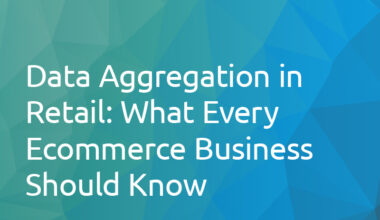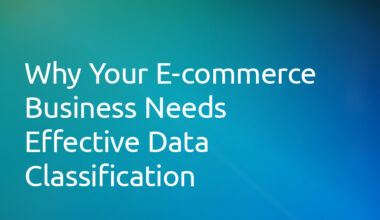The ecommerce industry is rife with potential. As digital marketplaces expand, the sheer volume of data generated by them grows exponentially. In this bustling digital marketplace, data doesn’t just represent numbers or facts; it’s the very currency that can determine the success or downfall of an ecommerce business. Enter the essential yet often overlooked realm of data classification. This process, when implemented effectively, can be the game-changer for driving ecommerce growth.
Decoding Data Classification
At its core, data classification involves organizing data into categories that make it easily accessible and useful. Think of it as a librarian sorting books into genres, authors, or subjects, making it easier for readers to find what they’re looking for. In the ecommerce context, data classification aids in streamlining processes, making informed decisions, and enhancing customer experiences.
Why It’s a Game-Changer for Ecommerce
1. Personalized Customer Experiences: Classifying data allows ecommerce platforms to understand buyer behaviors and preferences. This insight enables businesses to curate personalized shopping experiences, from product recommendations to targeted promotions, ensuring higher conversion rates.
2. Efficient Inventory Management: Proper classification of product data ensures that inventory levels are maintained accurately. It aids in predicting stock requirements, avoiding overstocking, and ensuring timely replenishments.
3. Enhanced Search Functionality: Ever been frustrated trying to find a specific product on an ecommerce site? Effective data classification enhances search functionality, making it quicker and more intuitive for customers to find what they seek.
4. Streamlined Operations: When data is classified and organized systematically, the operations, from order processing to shipping, become more efficient, reducing errors and improving overall productivity.
5. Better Marketing Decisions: Classified data provides clear insights into market trends, customer preferences, and sales patterns. This clarity allows for crafting marketing strategies that resonate more effectively with the target audience.
Data Classification: Best Practices
– Prioritize Data Security: While classifying data, ensure that sensitive information, like customer details and payment data, is secured, adhering to compliance regulations.
– Adopt Scalable Methods: Ecommerce platforms grow and evolve. The classification methods used should be adaptable and scalable to accommodate this growth.
– Ensure Accuracy: Just like misplacing a book in the wrong section defeats its purpose in a library, inaccurately classifying data can lead to inefficiencies and mistakes.
– Regular Audits: Continuously review and update data classification protocols to accommodate new data types and emerging business needs.
The Road Ahead
As ecommerce platforms continue to evolve, the importance of data will only magnify. In this scenario, treating data as a strategic asset becomes imperative. Data classification, when approached diligently, can transform this asset into a growth driver, fueling success in the competitive ecommerce landscape.
In essence, effective data classification is not just an operational requirement but a strategic move. By ensuring data is organized, accessible, and actionable, ecommerce businesses can harness its full potential, propelling themselves ahead in the race and delivering unmatched value to their customers.
Learn more about how we handle product data classification here.
 1.416.619.5349 Ext.325
1.416.619.5349 Ext.325 







